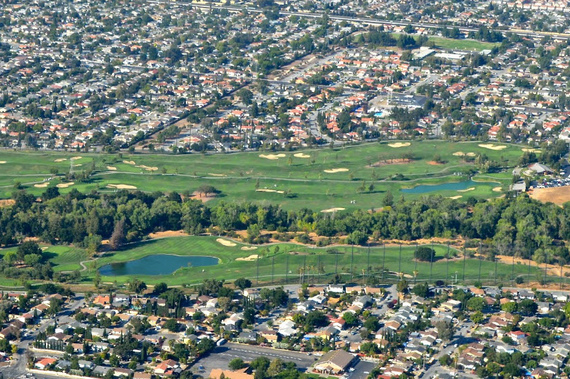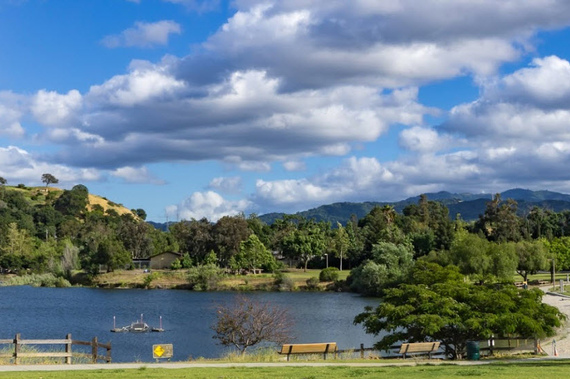1. Geography
San Jose is located at the southern edge of the San Francisco Bay in Santa Clara County; 50 miles south of San Francisco and 390 miles north of Los Angeles. The city is generally divided into the following areas (that once, were unincorporated communities or separate municipalities, until they got annexed by the city): Downtown San Jose, Central, West San Jose, North San Jose, East San Jose, and South San Jose.
Copernicus Peak is the highest point in the county at 4,372 feet, and the lowest point is 13 feet below sea level at the San Francisco Bay in Alviso.
The total area of the city is 180.0 sq mi, of which 3.4 sq mi (1.91%) is water. Four distinct valleys in the region are: Almaden Valley, on the south-west fringe of the city; Evergreen Valley to the south-east; Santa Clara Valley, which includes the flat, main urban expanse of the South Bay; and the rural Coyote Valley, to the city’s extreme southern fringe.
The Guadalupe River flows north through San Jose from the Santa Cruz Mountains, ending in the San Francisco Bay at Alviso.
1.a Climate
San Jose has a subtropical Mediterranean climate with moderate year-round temperatures. The average annual temperature is 70 degrees; 84 degrees in July and 41 degrees in December.
The city annual precipitation is just 15.82 in, due to a prominent rain shadow from the Santa Cruz Mountains. Precipitation is usually three times that amount in some other parts of the Bay Area.
Measurable precipitation falls in downtown San Jose on an average of 62 days a year, primarily from November through April or May.
With the light rainfall, residents of San Jose enjoy 300 days of full or partly sunny days each year.
Snow rarely falls in San Jose, but occasionally it coats nearby Mount Hamilton, and the Santa Cruz Mountains (which is extremely rare).


